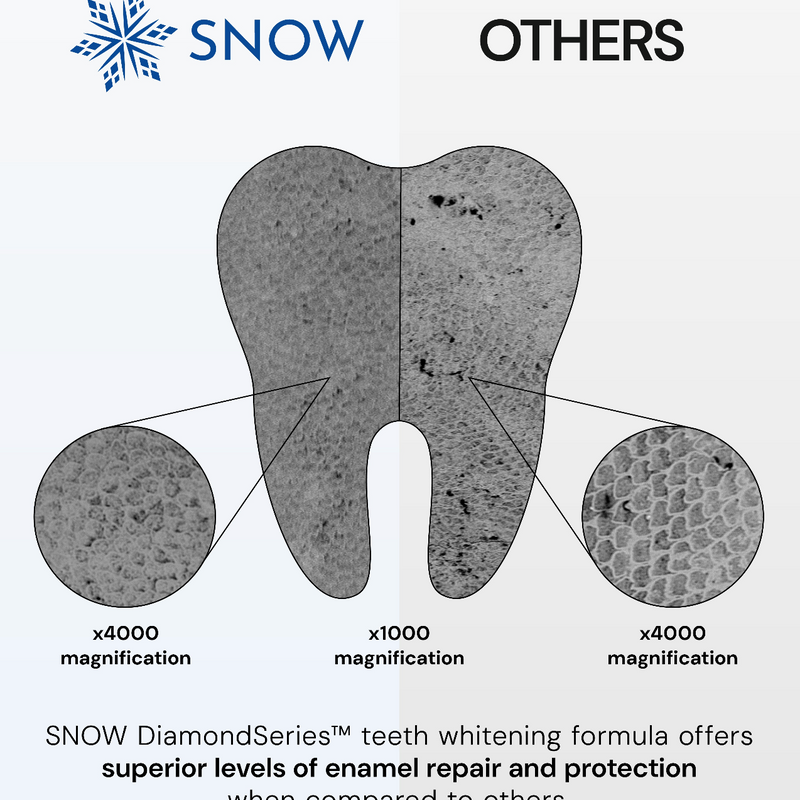Cancers that affect the mouth (oral cavity) and throat (oropharynx) are some of the deadliest oral diseases and can affect anyone. Additionally, warning signs of oral and pharynx cancer often first appear as an everyday dental problem or other health conditions, making them particularly easy to miss if you're unaware of common symptoms.
Early detection is one of the best ways to increase oropharyngeal cancer treatments' survival rates and efficacy. Because of this, it's crucial to educate yourself on the most common risk factors and indicators for the disease.
This article will discuss the most prevalent types of oropharyngeal cancer, their typical symptoms, and the most effective treatments.
What is oropharyngeal cancer?
When we talk about "cancer," we're referring to a situation where healthy cells change and grow out of control. This growth eventually leads to a tumor, which may be cancerous or benign (harmless). Cancerous tumors are malignant and can grow and spread to other areas.
Oropharyngeal cancer is characterized by malignant cells forming in the oropharynx's tissues or throat. The oropharynx is the middle part of the throat and includes the back third of the tongue, the soft palate, the tonsils, and the back walls of the throat. Unfortunately, this type of cancer can be deadly without prompt and effective treatment.
Is oropharyngeal cancer different from oral cancer?
Oropharyngeal and oral cancer are two of the most common types of cancer originating in the head and neck region. However, they are not quite the same.
As we previously described, throat cancers begin in the oropharynx. Oral cancer, on the other hand, is found in the oral cavity, which includes the following:
- The lips, teeth, and gums
- The lining inside the lips and cheeks (buccal mucosa)
- The floor of the mouth (under the tongue)
- The bony roof of the mouth (hard palate)
- The front two-thirds of the tongue
- The area behind the wisdom teeth
National Cancer Institute and American National Cancer Society Statistics
Two of the most notable organizations, The American National Cancer Society and The National Cancer Institute, recently estimated that about 54,000 adults in the U.S. will be diagnosed with oral or oropharyngeal cancer in 2022. Unfortunately, within that group, approximately 11,000 cases will be fatal.
Another reputable organization, The MD Anderson Cancer Center, notes most cases of throat cancer occur over age 60, meaning elderly adults are at a higher risk. However, both oral and oropharyngeal cancer can also occur in young people.
Another excellent indicator of a disease's effect on a population is its 5-year survival rate. This statistic tells you what percentage of people live at least five years after the cancer is found. In the U.S., the 5-year survival rate for oropharyngeal patients is 67%. However, this varies widely depending on the specific location and extent of the disease.
For instance, if a doctor can diagnose throat cancer in its early stages (ex. oral leukoplakia), the overall 5-year survival rate jumps to 85%. In contrast, if cancer has already spread to surrounding tissues or organs (advanced cancer), the 5-year survival rate drops to 68%.
Types of oropharyngeal cancers
The different parts of the oropharynx are made up of many unique types of cells. Additionally, different types of oropharyngeal cancer can start in each cell. Therefore, distinguishing between them is crucial, as they can determine a person's treatment options and prognosis.
Squamous cell carcinomas
The amount of throat cancer caused by squamous cell carcinoma is vast, affecting more than 90 out of 100 (90%) of all patients. This type of cancer develops in the flat, thin squamous cells that form the inner lining of the oropharynx.
The earliest stage of squamous cell cancer is called carcinoma in situ, which means that the cancer cells have only developed in the epithelium (the top layer of cells lining the oropharynx). Advanced stages or invasive squamous cell carcinoma means that the cancer cells have grown past the epithelium into the deeper layers of the oropharynx.
Minor salivary gland cancers
Minor salivary gland cancers start in the glands lining the mouth and oropharynx. Most lumps in these areas are found to be benign (noncancerous). However, cancerous cells can form.
There are many minor salivary gland cancers, including adenoid cystic carcinoma, mucoepidermoid carcinoma, and adenocarcinoma. About 80% of tumors in these areas start in the parotid glands, while about 10% occur in the submandibular glands. The rest develop in either the sublingual or minor glands.
Lymphomas
Although rare, cancer affecting lymphatic system cells (lymphoma) can also occur at the base of the tongue and tonsils, which contain lymphoid tissue.
Oral melanoma
Oral melanoma is an extremely rare and particularly aggressive cancer of the oropharynx. Melanomas develop in melanocytes, the pigment-producing cells that give skin its color.
Signs and symptoms of throat cancers
One of the most common symptoms of oropharyngeal cancer is a lump in the neck. However, some people don't experience any symptoms. Likewise, some indicators of throat cancer occur with other conditions, making them difficult to pinpoint.
Because many signs of throat cancers may seem innocuous at first, it's best to make an appointment with a doctor if you have any of the following symptoms:
- White or red patches on the tongue, gums, tonsils, or lining of the mouth
- Difficulty swallowing, chewing or moving the jaw or tongue
- A lump in the back of the throat, mouth, or neck
- Changes in your voice, such as hoarseness
- A burning sensation or numbness in the mouth
- Sores in the mouth that won't go away
- A sore throat that doesn't go away
- Swelling of the lymph nodes in the jaw or neck
- Dentures that no longer fit
- Unexplained weight loss
- Loose or painful teeth
- Coughing up blood
- Canker sores
- Loose teeth
- A persistent cough
- Ear pain
Diagnosing oropharyngeal cancer
Getting an early diagnosis is the best way to increase your chance of receiving successful treatment for throat cancers. Luckily, cancer specialists have high levels of expertise in diagnosing every type of throat cancer.
In most cases, your doctor will ask about any symptoms you may be experiencing and perform a thorough physical examination. Next, they may run additional diagnostic tests, including one or more of the following.
Laryngoscopy
A laryngoscopy is a procedure in which a doctor uses a thin, flexible tube with a lighted camera to examine the inside of the throat and check for abnormal tissue. The process is painless but may be slightly uncomfortable. Local anesthesia is typically used to alleviate any discomfort.
Biopsy
The laryngoscope may also have a tool attached to the end to remove tissue samples, which can be viewed under a microscope to check for abnormal cells. This procedure is called a biopsy and is done during the laryngoscopy.
CT Scan or MRI
A doctor may perform a computerized tomography (CT) scan or magnetic resonance imaging (MRI) to assess the size and invasiveness of throat cancer at its primary site and its relationship to nearby structures. CT scans take pictures of the inside of the body using x-rays taken from different angles. Then, a computer combines the photos into a detailed 3-D image that reveals any abnormalities or tumors.
In contrast, MRIs use magnetic fields – not x-rays – to produce detailed images of the body and can be used to measure a tumor's size. In addition, an MRI is beneficial for viewing soft tissues, such as the base of the tongue and the tonsils.
Causes and risk factors for oropharyngeal cancer
The exact cause of throat cancer is still unknown. However, researchers have identified several factors that are known to increase your risk of developing the disease, including:
- Human papillomavirus (HPV) infection (can be avoided with an HPV vaccine)
- Consuming large quantities of alcohol
- Compromised immune system
- Gastroesophageal reflux disease (GERD)
- Poor nutrition and vitamin deficiencies
- Family medical history of head and neck cancers
- Being older than 40 years
- Excess sun exposure
- Use of tobacco products
Treatment options for oropharyngeal cancer
There are various treatment options for throat cancer, depending on several factors, including the type of cancer, its size and location, and whether it has spread to other areas of the body. Additionally, cancer treatments are often used in combination for optimal results.
Radiation therapy
Radiation therapy is very localized and typically only targets where cancer is present. This type of treatment utilizes high-energy rays, such as x-rays, to destroy malignant cells and halt the spread of cancer. It's also a great treatment option for inoperable tumors.
Chemotherapy
Chemotherapy is often used in the form of anticancer medications that travel throughout the body to kill cancer cells and prevent them from spreading. The medicine works by interfering with the cancer cells' ability to replicate and may be used before or during radiation therapy or surgery to optimize treatment.
Chemoradiation
If chemotherapy is administered at the same time as radiation therapy, it is known as chemoradiation. In some cases of throat cancer, chemoradiation is the primary treatment a patient receives.
Targeted therapy
Certain anticancer drugs can target a specific characteristic of cancer cells, which is detected through specialized testing. One of the most significant advantages of targeted therapy is that it often causes fewer side effects than chemotherapy, which kills both cancerous and noncancerous cells.
Surgery
Depending on the stage and extent of cancer, surgery is often the best option to remove tumors and ensure optimal treatment. Tumor removal may be done through the mouth (transoral) or may require open surgery through an incision. This may be followed by facial plastic or reconstructive surgery.
Summary
Oropharyngeal (throat) cancer is a rare but aggressive form of head and neck cancer projected to affect about 50,000 in 2022. The most common signs of throat cancer are a lump or pain in the mouth or throat that does not go away. Other symptoms include difficulty swallowing, swollen lymph nodes, weight loss, and white patches on the tongue and throat. However, many patients experience no symptoms at all.
Early detection of throat and mouth cancers is the best way to increase a person's chance of survival and effective treatment. Additionally, certain diseases, such as HPV infection, can increase a person's risk of cancer. Because of this, any possible symptoms of throat cancer should be discussed with a doctor. The most popular treatments for oropharyngeal cancer are radiation therapy, chemotherapy, targeted therapy, and surgery.
FAQs
Can white spots in the throat be cancer?
White or red patches in the throat may indicate oropharyngeal cancer, or they could be completely harmless, as is the case with a fungal infection known as oral thrush. Only a doctor can determine whether the white spots are cancerous or benign.
Can you feel early throat cancer?
In some cases, patients have a prolonged sore throat, ear pain, swollen lymph nodes, or trouble swallowing before being diagnosed with throat cancer. If you have any of these symptoms of throat cancer, it's best to visit a doctor for a definitive diagnosis.
What can be mistaken for throat cancer?
Many medical conditions can be mistaken for throat cancer, including allergies, sinus infections, and the common cold.
What is early stage white spots throat cancer?
In its early stage, oropharyngeal cancer may show up as white spots on the throat and cause swollen lymph nodes. See a doctor immediately if you notice this symptom.

























